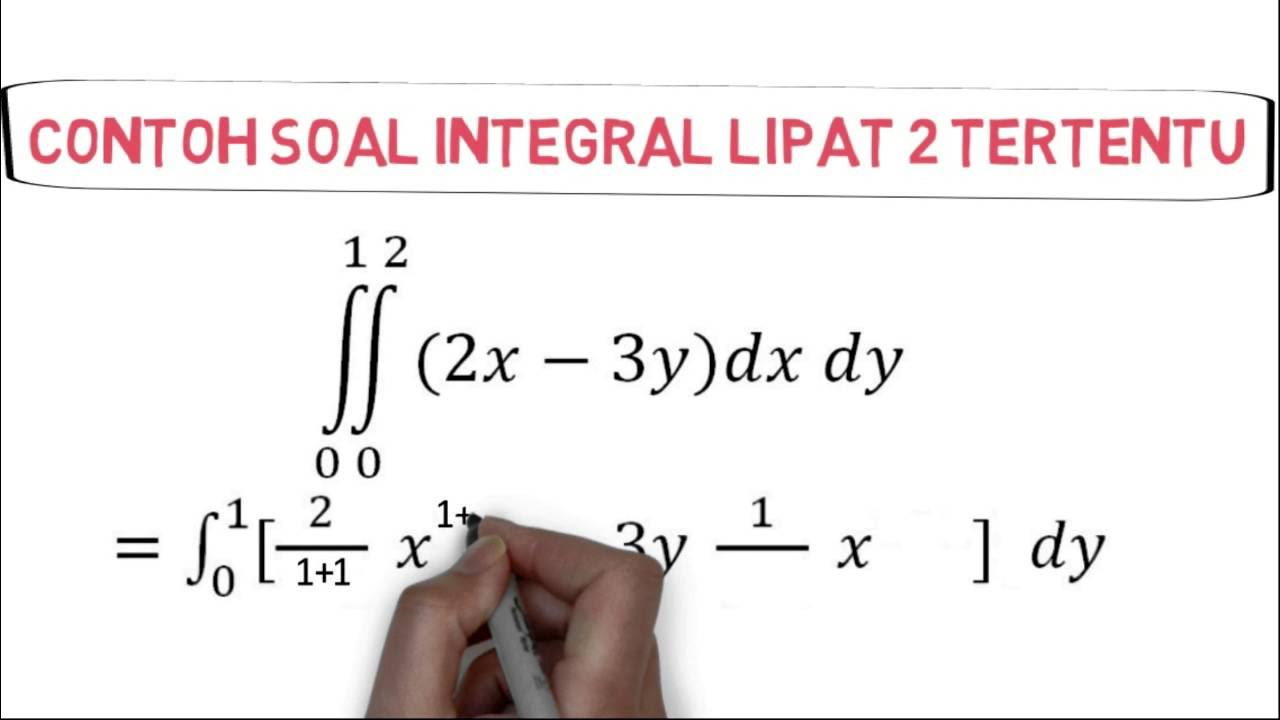Integral Fungsi Aljabar Matematika Kelas 11 • Part 1: Pengertian Integral & Integral Tak Tentu
Summary
TLDRIn this video, the concept of integration, particularly indefinite integrals of algebraic functions, is explained in detail. The video covers the definition of an integral as the reverse of differentiation, introduces the basic integral formula, and explains the role of the constant 'C'. Several examples of integrating polynomial functions are provided, demonstrating how to apply the power rule for integration. The video also emphasizes the importance of specifying the variable of integration ('dx') and offers tips for verifying integral results through differentiation. A thorough introduction to the fundamental principles of calculus is provided.
Takeaways
- 😀 Integral is the reverse of differentiation and is also called antiderivative or anti-differential.
- 😀 The integral symbol ∫ represents the operation of finding the integral of a function, resulting in the original function plus a constant (C).
- 😀 The constant C in the integral result exists because the derivative of a constant is zero, meaning we cannot determine the exact value of C without additional information.
- 😀 The notation dx in an integral specifies the variable with respect to which the integration is performed.
- 😀 When finding the integral of a function like 2x, the result is the original function, x², with an added constant C.
- 😀 The integral of a function like x² + 1, after differentiation, results in 2x. Thus, its integral would be x² + 1 plus a constant.
- 😀 The integral formula for x^n (where n ≠ -1) is ∫x^n dx = (x^(n+1))/(n+1) + C.
- 😀 The reasoning behind the integral formula is that the derivative of x^(n+1) divided by (n+1) will give back the original x^n.
- 😀 It’s important to include dx to specify the variable of integration, as integrating a function without the correct variable is ambiguous.
- 😀 To verify the correctness of an integral result, you can differentiate the answer. If you get back the original function, the integral is correct.
Q & A
What is the main concept of an integral as described in the video?
-An integral is the reverse of differentiation. It is also known as an antiderivative or anti-differential, where the task is to find the original function from its derivative.
Why does the result of an integral include a constant, C?
-The constant C accounts for the fact that when a function is differentiated, any constant term is removed. Therefore, when integrating, the constant term could vary and needs to be included in the result.
What does the notation 'dx' represent in an integral?
-'dx' indicates the variable with respect to which the function is being integrated. It clarifies the variable that the integration is performed on, ensuring the process is correctly defined.
How do you integrate the function '2x'?
-To integrate '2x', the result is 'x^2 + C'. This is because the power of 'x' increases by one and the coefficient is divided by the new exponent.
What is the significance of the constant term in integration examples?
-The constant term in integration examples reflects the fact that when a function is differentiated, the constant term is lost, and thus, any value can be added back when integrating, represented by 'C'.
Why is the Power Rule for integration important?
-The Power Rule for integration simplifies the process of integrating polynomial functions. It states that when integrating 'x^n', the result is '(x^(n+1)) / (n+1) + C', where 'n' is not equal to -1.
What happens if the exponent of 'x' is -1 when applying the Power Rule?
-If the exponent is -1, the formula of the Power Rule does not apply because it would lead to division by zero. In this case, the integral is a natural logarithm: '∫(x^(-1)) dx = ln|x| + C'.
How do you verify if your integral solution is correct?
-To verify if your integral is correct, differentiate the result. If differentiating it gives back the original integrand, then the solution is correct.
What is the integral of 'x^2'?
-The integral of 'x^2' is '(x^3)/3 + C'. This follows from the Power Rule, where the exponent increases by one, and the result is divided by the new exponent.
How do you handle integrals involving square roots or fractional exponents?
-To integrate expressions involving square roots or fractional exponents, rewrite the square root as a power (e.g., '√x' as 'x^(1/2)'), then apply the Power Rule for integration.
Outlines

This section is available to paid users only. Please upgrade to access this part.
Upgrade NowMindmap

This section is available to paid users only. Please upgrade to access this part.
Upgrade NowKeywords

This section is available to paid users only. Please upgrade to access this part.
Upgrade NowHighlights

This section is available to paid users only. Please upgrade to access this part.
Upgrade NowTranscripts

This section is available to paid users only. Please upgrade to access this part.
Upgrade NowBrowse More Related Video

MATEMATIKA Kelas 11 - Integral Tak Tentu | GIA Academy

BELAJAR INTEGRAL DARI DASAR DALAM 12 MENIT!

KALKULUS | INTEGRAL | INTEGRAL TAK TENTU (ANTI TURUNAN)

KALKULUS | TEKNIK PENGINTEGRALAN | METODE INTEGRAL PARSIAL

#06 Konsep Dasar Integral dalam Matematika untuk Fisika Bagian #1

INTEGRAL LIPAT 2 #KALKULUS 2
5.0 / 5 (0 votes)